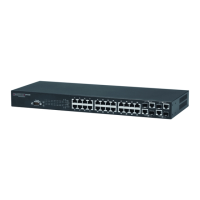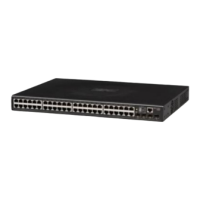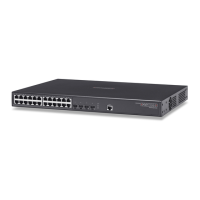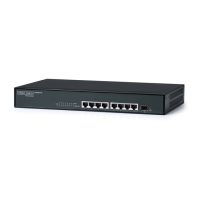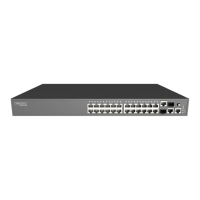C
HAPTER
15
| Basic Administration Protocols
Link Layer Discovery Protocol
– 360 –
■
VLAN ID – The port’s default VLAN identifier (PVID) indicates the
VLAN with which untagged or priority-tagged frames are associated
(see "IEEE 802.1Q VLANs" on page 155).
■
VLAN Name – The name of all VLANs to which this interface has
been assigned(see "IEEE 802.1Q VLANs" on page 155 and "Protocol
VLANs" on page 174).
■
Port And Protocol VLAN ID – The port-based and protocol-based
VLANs configured on this interface (the port-based and protocol-
based VLANs configured on this interface (see "IEEE 802.1Q VLANs"
on page 155 and "Protocol VLANs" on page 174).
◆ 802.3 Organizationally Specific TLVs – Configures IEEE 802.3
information included in the TLV field of advertised messages.
■
Link Aggregation – The link aggregation capabilities, aggregation
status of the link, and the IEEE 802.3 aggregated port identifier if
this interface is currently a link aggregation member.
■
Max Frame Size – The maximum frame size. (See "Configuring
Support for Jumbo Frames" on page 92 for information on
configuring the maximum frame size for this switch
■
MAC/PHY Configuration/Status – The MAC/PHY configuration
and status which includes information about auto-negotiation
support/capabilities, and operational Multistation Access Unit (MAU)
type.
WEB INTERFACE
To configure LLDP interface attributes:
1. Click Administration, LLDP.
2. Select Configure Interface from the Step list.
3. Set the LLDP transmit/receive mode, specify whether or not to send
SNMP trap messages, and select the information to advertise in LLDP
messages.
4. Click Apply.

